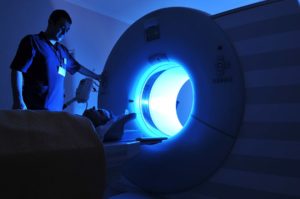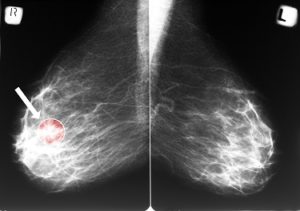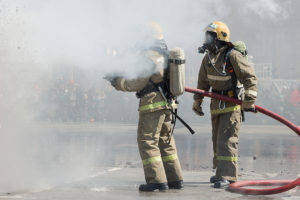Every day, firefighters put their lives on the line to protect the lives and possessions of others. Unfortunately, it turns out that some firefighters may have put their lives on the line in more ways than they anticipated. Studies show that exposure to AFFF, a firefighting foam commonly used in airports and on military bases, can increase the risk that firefighters will develop serious forms of cancer.
Did you receive a cancer diagnosis due to past AFFF exposure? You may have the right to compensation. Contact Dolman Law Group Accident Injury Lawyers, PA today for a free consultation to help you better understand your right to compensation.
What Is AFFF?
AFFF, or aqueous film forming foam, offers powerful fire fighting solutions. The foam cools down the fire, which decreases the damage it may cause and helps slow its spread, while also coating the fire's fuel, which can prevent it from burning. The film it creates between the fuel and available oxygen in the air can help prevent further combustion, quickly putting out the fire.
AFFF has been used since the early 1900s. Development on these products has continued over time as scientists have looked for increasingly more efficient ways to put out fires. AFFF proves highly effective in many fires, especially those that occur in highly dangerous and combustive areas. Navy firefighters and airport firefighters must often act fast to put out fires and preserve the safety of everyone else around them, and AFFF offers a much-needed tool that can streamline that process.
Originally, AFFF development aided in the suppression of oil-based fires, which water will not effectively put out.
Unfortunately, AFFF also poses significant dangers. While more recent versions of AFFF do not contain them, past versions of AFFF contained PFOS and PFOA, or perfluorooctane sulfonate and perfluorooctanoic acid. These dangerous chemicals can cause significant harm, not only to the environment as they leech into the dirt and groundwater, but to the bodies of firefighters who face exposure in the course of training or fighting a fire.
Firefighting Foam and Cancer: The Risk

Firefighters assigned to airports and military bases have the highest risk of cancer due to exposure to AFFF fire fighting foam. However, other firefighters may also use this substance, some regularly. Military bases and airports may also use AFFF as part of their training exercises. People who own property near these installations, especially if firefighting foam gets used regularly, may also have a high risk of developing cancer due to their exposure to those substances.
PFOS and PFOA can build up in the body over time, leading to high levels of these compounds. The body does not appear to break those compounds down even years after exposure, which means that exposure can compound over years as a firefighter.
Many firefighters have significantly higher levels of PFOS and PFOA in their blood, which could leave them at increased risk for developing several types of cancers, including kidney, bladder, and testicular cancer.
Your Right to Compensation After Developing Cancer from AFFF Exposure
Following a cancer diagnosis due to AFFF exposure, you have the right to file for compensation. Cancer treatments can quickly grow costly, and cancer itself can prevent you from working or interfere with your enjoyment of life. Following a cancer diagnosis, contact an experienced personal injury attorney as soon as possible to learn more about your legal right to compensation.
Who bears liability for your exposure to AFFF?
Many AFFF manufacturers have known for years about the potential dangers posed by their chemicals. Nevertheless, they continued to produce those chemicals and did not remove them from the market. As a result, countless more firefighters have faced AFFF exposure as they worked to bring fires under control with these hazardous chemicals.
In some places, facilities continued to use AFFF containing PFOA and PFOS despite the known danger. Your employer may share liability for your exposure to AFFF if your employer continued to require the use of AFFF despite other available options for fighting fires and had full knowledge of the potential dangers you might face.
What damages can you seek following AFFF exposure?
Following a cancer diagnosis related to AFFF exposure, consult an experienced firefighting foam cancer attorney to learn more about the specific compensation you might expect.
Medical expenses. Typically, in a personal injury claim, the liable party will base your compensation on the medical expenses you have suffered as a result of your diagnosis. Consult an attorney to learn more about the expenses you can include as part of the medical care you required during your cancer treatment. You may want to include:
- Chemotherapy. Chemotherapy delivers high-dose medication designed to kill abnormal or fast-growing cells throughout your body. Many people require multiple rounds of chemotherapy to treat their cancer.
- Radiation. Radiation therapy delivers high doses of radiation directly to cancer cells.
- Surgery. Many types of cancers require the surgical removal of the cancerous cells or, in some cases, the area of the body affected by those cells. In many cases, patients have lifelong reactions to the treatment they require to remove cancer cells from their body. Surgery may also have a long recovery time.
- Hospitalization. Sometimes, you can receive cancer treatment at the hospital or in a cancer center, then go home between treatments. Other times, you may need to stay in the hospital to receive the highest possible standard of care. With each day you spend in the hospital, your medical expenses may increase substantially.
- In-home care. Even if you can remain at home during cancer treatments, you may need an in-home caregiver to come in and help manage your medications or to assist with daily tasks you can no longer perform on your own.
- Durable medical equipment. Some cancer patients require durable medical equipment to help aid in independence or make it possible for them to carry on with their daily tasks. The equipment you need will depend on your specific type of cancer and what your doctor recommends.
Lost wages. You may miss a great deal of work during cancer treatment. If you still work as a firefighter, you may not have the strength to haul heavy hoses or even gear up to respond to a call while undergoing cancer treatment. Even if you no longer work in a highly active profession, however, you may still not have the ability to work during your treatments.
Some treatments prevent you from going to work. They may weaken you to the point that you cannot complete your job responsibilities or weaken your immune system so that your doctor recommends isolating from other people. Other treatments may make it very difficult for you to perform your usual job duties, leaving you feeling tired or disoriented.
You may also need to miss work to receive your cancer treatments, since treatment may occur during business hours.
Sometimes, your employer will work with you to allow you to continue to work as much as possible despite cancer treatments. In other cases, however, your employer may have little they can do. The more work you miss due to your cancer treatments, the more financial pressure you may feel. Talk to an experienced personal injury attorney about how you can include lost wages related to your cancer diagnosis as part of a personal injury claim concerning exposure to AFFF.
Pain and suffering. In addition to causing high medical bills and lost wages, firefighting foam cancer can lead to considerable pain and suffering. Many types of cancer cause significant physical suffering: pain, weakness, and decreased energy, for example. Other cancer patients find that they suffer significant emotional distress related to a cancer diagnosis. You may worry about what will happen to your family members if you can no longer provide for them. You may feel isolated from friends and family, especially if you have to miss out on social activities during your cancer treatments and diagnosis.
While an attorney cannot give you back that time, an experienced firefighting foam cancer attorney can help you calculate how that pain and suffering impacted you and what you need to do to include it as part of your personal injury claim.
How an Attorney Can Help in a Firefighting Foam Cancer Claim

Working with an experienced personal injury attorney can offer advantages in your firefighting foam cancer claim.
An attorney can help you calculate and understand the compensation you deserve.
Early in your cancer diagnosis, you may not have connected it to AFFF exposure. You may have had enough to do as you struggled to manage your treatments and kept your head above water, which may have prevented you from keeping track of all of your medical expenses or made it difficult for you to keep up with all of your lost wages.
Even if you recently faced a cancer diagnosis due to AFFF exposure, you may have little idea how much compensation you really deserve.
When you sit down with an attorney, that attorney will provide you with a better idea of how much compensation you should receive for the losses you faced due to AFFF exposure. In many cases, you may receive more compensation than you think.
Talking to an attorney can give you a better understanding of when to accept a settlement offer and when to continue negotiating.
As firefighters age and time goes by after AFFF exposure, more firefighting foam manufacturers have seen cancer-related lawsuits pouring in. They know what costs the company may face as a result of those lawsuits, and they may work hard to minimize the compensation they have to pay out as much as possible.
Many big businesses use the same common tactics to help reduce their overall payouts following situations like the AFFF cancer connection. When a patient diagnosed with cancer due to that exposure contacts them, their lawyers may turn around and quickly issue a settlement offer. That offer may sound attractive, especially if you have not taken the time to sit down and calculate your overall medical expenses or if you do not have a good picture of what those medical costs will look like thanks to a recent diagnosis.
That offer, however, usually does not reflect the full compensation you deserve for your cancer diagnosis.
If you accept the offer, it could prevent you from receiving the compensation you really deserve for an AFFF-related cancer diagnosis. Instead, consult with an experienced firefighting foam cancer attorney, who can give you a better look at exactly how much compensation you deserve and when you should continue to negotiate regarding your settlement.
An attorney can help collect much-needed evidence that will help prove your claim.
You may need to submit and organize considerable evidence that will help show where you faced AFFF exposure, what companies' products you faced exposure to, and how much you suffered as a result of that exposure. In some cases, you may need to show evidence of your employment as a firefighter. This could prove difficult, especially if you worked for a department that has since gone out of business. An attorney can help collect vital evidence that will prove when your exposure took place.
An attorney will also help you provide evidence of the severity of your diagnosis and how it impacts you. You may, for example, need to pull together your medical bills to show evidence of what treatments you received and the severity of your cancer. Your doctors, the severity of your diagnosis, and how far your cancer spread before you received treatment can all affect your medical costs and your suffering related to a cancer diagnosis. An attorney can help you bring all that paperwork and evidence together to support your claim.
Many victims find that working with an attorney ultimately increases the compensation they receive, even after they pay their legal bills.
Common Types of Cancer Associated with Firefighting Foam

AFFF exposure can cause cancer in several parts of the body. If you have faced a cancer diagnosis and believe it may have occurred due to exposure to AFFF, make sure to consult your doctor and an experienced firefighting foam cancer attorney as soon as possible.
Kidney Cancer
Initial signs of kidney cancer may include blood in the urine, which may appear rusty or red. Other times, kidney cancer may prove difficult to notice in its early stages. Recent advances in technology, however, have made it easier to diagnose kidney cancer earlier. As a result, many people have an improved prognosis.
In addition to blood in their urine, patients with kidney cancer may notice pain in the back or side that they cannot seem to make go away. Stretching or shifting position will not change it, nor will many common treatments. Patients may also experience common symptoms like loss of appetite, tiredness, and fever.
In many cases, kidney cancer can masquerade for quite some time as many other common illnesses, which can lead to a longer time before receiving a diagnosis. The longer it takes to diagnose kidney cancer, the more it may spread.
Treatment for kidney cancer may include:
- Surgical removal of affected cells
- Surgical removal of the affected kidney
- Cryotherapy
- Radiofrequency ablation
- Targeted therapy
- Immunotherapy
- Radiation therapy
Testicular Cancer
Testicular cancer can initially show as a lump or enlargement of one testicle or the other. Patients may also notice that the scrotum feels heavy or swollen, or struggle with pain in the abdominal area or groin. Patients may also suffer noticeable back pain that does not appear to have another cause: for example, they may not notice a difference when changing position, stretching, or engaging in light exercise to help build strength. Pain or discomfort in the testicle or scrotum could also serve as an indication of testicular cancer.
Many men fail to seek treatment for testicular cancer as early as they should. They may ignore symptoms and problems for some time, often out of embarrassment. Ideally, however, you should see your doctor any time you suspect abnormalities, including symptoms of testicular cancer. Surgery, radiation, and chemotherapy can all help treat testicular cancer.
Removal of one testicle can still allow a patient to have a relatively normal life, including normal sex life. Some treatments can help the patient go on to live a satisfying life, even after the removal of both testicles. Hormonal therapy, in particular, can aid in adding normalcy. Some patients choose to have prosthetic testicles implanted after removal to help improve appearance.
Non-Hodgkin's Lymphoma
Non-Hodgkin's Lymphoma impacts the lymphatic system, including white blood cells. It often begins with pain and swelling in the abdomen. It may include chest pain or coughing. Some patients also note that they have trouble breathing. It can also cause persistent fever, fatigue, and night sweats. Many patients with Non-Hodgkin's Lymphoma have fever and night sweats. For some, those night sweats can serve as one of the first symptoms of a problem. The disease can also cause unexplained weight loss.
Treatment for Non-Hodgkin's Lymphoma typically includes:
- Chemotherapy
- Radiation
- A bone marrow transplant
Other types of biological drug therapies may also prove effective in treating Non-Hodgkin's Lymphoma. Patients should seek treatment as soon after diagnosis as possible. The more advanced the disease becomes, the more difficult it may prove to treat, which can both increase the risk of mortality and increase the patient's suffering.
Prostate Cancer
Often, especially in its early stages, prostate cancer causes no noticeable signs and symptoms. Sometimes, patients may choose not to go through aggressive treatment for prostate cancer. It can continue for some time without developing further, which means many people can go on to lead highly productive, full lives despite a prostate cancer diagnosis. Men with prostate cancer, but who opt not to go through immediate treatment due to prostate cancer's slow progression, will need to have regular scans and tests to ensure that the cancer has not become more aggressive or spread further.
When symptoms of prostate cancer do appear, they may include difficulty with urination along with decreased force in the urine stream. It may become necessary to push harder to expel urine. Men may also notice pain in the pelvic area or, in some cases, erectile dysfunction.
When prostate cancer does progress to the point of needing treatment, that treatment may include surgery to remove the prostate or radiation. Some men may also benefit from hormone therapy, especially if the prostate requires removal. Men should see their doctors any time they experience pain or worrisome symptoms.
Pancreatic Cancer
Like many other types of cancer, especially those caused by firefighting foams, pancreatic cancer may not show signs in its early stages. Often, patients discover that they have pancreatic cancer either once it has become extremely advanced or due to scans for other symptoms. Common symptoms of pancreatic cancer include abdominal pain that radiates to the back, loss of appetite, and jaundice.
Patients may also notice significant changes in the color of urine or stool: lightened stool and darkened urine, for example. Patients with changes in urine and stool with no apparent reason should address their concerns with their doctor as soon as possible. Patients with pancreatic cancer may also suffer from itchy skin, blood clots, and fatigue. As it advances, pancreatic cancer may cause increasing pain, nausea, and vomiting in addition to its other symptoms.
Treatment for pancreatic cancer may include surgery, chemotherapy, and/or radiation.
Breast Cancer

Women with breast cancer usually discover the cancer when they note a lump during a self-exam. Other times, a doctor may notice signs of breast cancer while conducting a breast exam on a patient. Initial signs may also include changes in the appearance of the breast: noticeable shifts in its size or shape, for example. Patients may also notice dimpled skin on the breast.
It can also cause one nipple to invert suddenly. Breast cancer does have a genetic element to the risk; however, many patients with breast cancer do not have a family history, and exposure to cancer-causing substances such as firefighting foam can increase the risk of developing breast cancer.
Patients with breast cancer have treatment options that include:
- Chemotherapy
- Surgical removal of one or both breasts
- Radiation
- Hormone therapy
- Immunotherapy
Some women who have breast cancer in one breast will have the other removed at the same time to reduce future risk and decrease the likelihood that cancer will spread undetected later in life.
Bladder Cancer
Often, patients with bladder cancer notice a change in urination habits. They may notice that they have to urinate more frequently, or they may struggle to urinate or empty the bladder due to pain during urination. Blood may also appear in the urine, either as red or darker-colored blood. Low-grade bladder cancer, in which the cancer cells appear closer to normal cells, may grow more slowly, while high-grade bladder cancer often grows quickly and requires much more aggressive treatment.
Patients with bladder cancer may need:
- Surgery
- Chemotherapy delivered directly to the bladder
- Whole-body chemotherapy
- Radiation
- Immunotherapy
Leukemia
Leukemia impacts the blood-forming tissues of the body, including white blood cells, which prove vital in fighting infection. Patients with leukemia may, at first, simply appear ill with a normal infection. They may show signs of fever, suffer from chills, or have unexplained night sweats. They may also become ill with other infections more often. They may bleed and bruise more easily or have more nosebleeds than normal. Patients may also feel tired, run-down, or have bone pain and tenderness.
Treatment for leukemia may include:
- Chemotherapy
- A bone marrow transplant
- Radiation
- Biological therapy
- Targeted therapy
- A stem cell transplant
Liver Cancer
In the early stages of liver cancer, it often has few to no symptoms, or what symptoms do appear, patients can write off as a normal part of everyday life. Unfortunately, symptoms may grow more severe over time. Patients with liver cancer may suffer from loss of appetite and upper abdominal pain. They may lose weight without trying or despite a normal diet. Patients may struggle with nausea and vomiting or have a general sense of weakness and fatigue that interferes with normal activities or prevents them from doing the things they want or need to do.
As liver cancer progresses, patients may suffer from jaundice, or yellowing of the skin and the whites of the eyes. Jaundice may grow more pronounced as liver cancer progresses, since the liver usually filters out toxins that move through the rest of the body.
Sometimes, doctors may remove tumors in the liver. The patient may even need liver transplant surgery.
Treatment may also include:
- Cryotherapy
- Radiofrequency ablation
- Injecting alcohol into the tumor
- Injecting chemotherapy into the liver
- Placing radiation beads directly into the liver
- Radiation therapy
- Immunotherapy
- Chemotherapy
- Targeted drug therapy
Often, patients opt for targeted treatment for liver cancer, which delivers those treatments directly to the liver instead of spreading those symptoms throughout the body. In some cases, however, patients, especially those who have had cancer metastasize throughout their bodies, may require more generalized treatment for liver cancer.
Ovarian Cancer
Female firefighters may develop ovarian cancer due to their exposure to firefighting foam. In early-stage ovarian cancer, female firefighters may have relatively minor or nonexistent symptoms. As cancer advances, however, they may notice tenderness and swelling in the abdomen or abdominal pain. Ovarian cancer can also cause patients to get full quickly when eating or to lose weight abruptly. In some cases, patients may have a swollen abdomen despite weight loss. Patients may also notice changes in bowel or bladder habits, including increased constipation.
Treatment for ovarian cancer includes:
- Surgery to remove one or both ovaries
- Chemotherapy
- Targeted therapy
Managing the Treatments for Firefighting Foam Cancer
The treatments for firefighting foam cancer can help eradicate symptoms and expand the victim's lifespan, but they can cause their own complications. Often, patients deal with severe side effects for the duration of their treatment, many of which may prevent them from working or enjoying the activities they usually associate with daily life. Patients may go through several types of treatment, either together or separately, as a result of a firefighting foam cancer diagnosis.
Chemotherapy
Chemotherapy delivers powerful chemicals to the body designed to kill fast-growing cells. Unfortunately, normal cells throughout the body can suffer some effect from chemotherapy. While it offers a highly effective way to treat many types of cancer, including those developed by firefighters after facing exposure to firefighting foam, it also brings side effects. Chemotherapy can cause nausea, vomiting, and diarrhea. Many patients suffer from hair loss and loss of appetite. Fever, fatigue, and easy bruising all appear commonly in patients going through chemotherapy.
Radiation
Radiation therapy delivers a high dose of radiation designed to kill cancer cells throughout the body. For many patients, radiation offers fewer side effects than chemotherapy; however, it does not pose a viable treatment option for all types of cancer. Patients can also receive only a set amount of radiation in a lifetime, since it can cause additional side effects and complications. Over time, patients can grow tired and weak as they continue to undergo radiation therapy.
Immunotherapy
Immunotherapy focuses on activating or suppressing the immune system to more effectively treat cancer. When the immune system gets revved up to act against cancer cells, however, it can also act against other cells in the body. It can cause flu-like symptoms, including fever and chills, or leave behind a red or painful rash. Immunotherapy offers a highly effective way to treat patients' cancer and can often substantially improve outcomes in many types of cancer caused by exposure to firefighting foam; however, it does not work effectively against all types of cancer.
Your doctor will help create a care plan that will address your specific symptoms and help you find the right treatment for your needs.
FAQs Concerning Firefighting Foam Cancer and Your Right to Compensation

Following a cancer diagnosis related to your job as a firefighter and your use of firefighting foam, you may feel overwhelmed. You knew that your job posed risks, but you expected to meet them head-on, not to have one sneak up on you. What right do you have to compensation? How should you handle your claim? If you have specific questions related to your exposure and your right to compensation, contact an experienced firefighting foam cancer attorney as soon as possible. Here, we attempt to answer some of the most frequently asked questions related to firefighting foam cancer lawsuits.
1. How much does it cost to have an attorney handle my firefighting foam cancer claim?
Consult an experienced attorney to learn more about the cost associated with a firefighting foam claim. You have the right to compensation for the injuries you suffered as a result of exposure to AFFF. Many attorneys will start with a free consultation, which will allow them to get a better idea of the extent of your injuries and suffering related to the claim, and help you decide whether you want to work with a specific attorney or not. During that free consultation, the attorney may also decide whether he or she wants to take you on as a client.
Many attorneys will accept personal injury clients on a contingent fee basis. Instead of charging you upfront, which could prevent you from affording the services you need, the attorney will accept payment as a percentage of your claim. This means attorneys only collect a percentage of any settlement or judgment for compensation. If a lawyer fails to obtain money for you, you owe your lawyer nothing.
Instead of asking, “How much does an attorney cost for a firefighting foam cancer claim?” make sure you take into consideration how much it could cost to not have an experienced attorney to handle your personal injury claim. If you do not have an attorney, you may struggle to get the full compensation you deserve for the losses you faced as a result of firefighting foam cancer. Many big firms and insurance companies will try to deny the full amount of the claim you deserve.
You may struggle to get them to take you seriously. Bringing in an attorney, however, often makes those firms take you much more seriously. Many personal injury victims, including victims of firefighting foam cancer, find that they can achieve much higher levels of compensation through an attorney than they can by pursuing the claim on their own.
2. When should I file a personal injury claim related to firefighting foam cancer?
Talk to an attorney as soon as you realize that your cancer diagnosis connects to AFFF exposure. As lawsuits increase, some companies may no longer have the resources to offer the same settlements in future claims, or their attorneys might grow stricter in their dealings and regulations. Not only that, the sooner you speak with an attorney, the sooner an attorney can start working with you to make sure that you get the compensation you deserve for your cancer diagnosis.
3. How much compensation should I expect for my firefighting foam cancer claim?
If you have cancer due to AFFF exposure, you should talk to an attorney as soon as possible to get a better idea of how much compensation you, specifically, should expect. Most claimants include the same basic elements in their claim: financial costs of cancer treatment, including all medical bills; lost wages related to your cancer treatments and diagnosis; and pain and suffering. An attorney can help you break down your losses and costs, allowing you to create a more comprehensive demand package.
4. Who has the highest risk for developing cancer due to firefighting foam exposure?

Firefighters, especially those who worked on military bases or in airports, may have higher degrees of risk for cancer related to firefighting foam exposure. These firefighters may also have gone through numerous training exercises throughout their careers, which could increase their exposure to cancer-causing substances and, therefore, their risk of developing some types of cancer. Firefighters who have put out any fires that required the use of AFFF throughout their careers may all have a risk of developing cancer due to that exposure.
Others may also develop cancer due to AFFF exposure. The chemicals used in AFFF can leach into groundwater or the soil, leading to exposure for people who live outside of areas where it got used. Individuals who live near military bases or airports, especially those used in training exercises, have particularly high risk.
5. Can I file a claim against an AFFF manufacturer if I developed cancer due to AFFF exposure in groundwater or the soil, rather than as a firefighter?
Yes. If you faced a cancer diagnosis due to AFFF exposure, even if you did not work as a firefighter but, instead, lived in an area near a base or airport, you may still have the right to seek compensation for the losses you faced. Consult an attorney to learn more about your legal rights related to firefighting foam exposure and cancer if you did not work as a firefighter.
6. What evidence will my attorney help me produce to show the validity of my AFFF cancer claim?
Your attorney will work with you to collect relevant evidence that will help you prove the validity of your claim and ultimately help you seek compensation for the losses that you face. You may want to see what evidence you already have on hand that will help prove your claim and make it easier for you to pursue compensation related to your cancer.
Evidence may include:
Medical records. Your medical records will establish vital information about your cancer and your condition. Your doctors will indicate what type of cancer you have, what kind of treatment you received or will need, and how your cancer impacts your life. Some people, especially those whose cancer has progressed significantly, may have more limitations than others. Your doctor may testify about how you handled treatments and what assistance you required to help you improve your overall condition.
Medical bills. In most personal injury claims, including claims related to cancer from firefighting foam exposure, your medical bills will form the foundation of the claim. You may need to collect your medical bills and present them to establish the full extent of your expenses. These may include your bills for chemotherapy, radiation, surgery, or hospital stay.
In some cases, including surgery, you may have more than one bill from the same procedure, so make sure you keep track of all of them or collect as many as possible. For example, you may receive a separate bill from the anesthesiologist who oversaw your surgery, or you might receive a facility use bill from the hospital alongside the bill from the provider who performed your procedure.
Talk to your attorney about how to establish your costs if you no longer have copies of your medical bills. The doctor and hospital where you received treatment may have copies of your bills in their databases, or you might use a general claim that will establish the average cost of the medical treatments you received.
You may also include receipts of any other expenses related to your cancer treatments. For example, some people need to travel to receive the highest possible quality of treatment for their cancer. You may need to stay in a specific facility or even a hotel to receive long-term treatment. Consult an attorney to learn what expenses to include as part of your personal injury claim and how to display them.
Proof of your exposure. If you worked as a firefighter, especially a firefighter in a facility that commonly used firefighting foam or a facility that used AFFF for training purposes, you can easily provide proof of past employment to establish where you worked. If, on the other hand, you developed cancer related to firefighting foam exposure when you lived or worked in a certain area with a high level of those chemicals in the ground or water, you may need to show when you lived there and how high the levels remain.
You may need to arrange for testing of groundwater or soil to prove that you faced high levels of exposure to AFFF foam or the chemicals it contains. Blood tests can also help display your exposure to those chemicals: firefighters who commonly work with AFFF, for example, frequently have higher levels of those compounds in their blood than most people.
7. How should I handle medical bills for cancer treatment associated with a diagnosis related to firefighting foam?

You have cancer due to your exposure to firefighting foam. You know that you have grounds for a lawsuit that will help you recover the funds needed to pay your medical expenses.
How should you handle those medical bills?
You, as the patient receiving treatment, must make arrangements to pay for your medical expenses. Even though another party caused your cancer diagnosis, you will need to handle your medical expenses. However, you do have some options that can help offset those costs and provide you with better, more effective options.
Your medical insurance. If you carry medical insurance, your insurance will pay for a large portion of the bills associated with your treatments. Contact your insurance company to get a better idea of what it will cover with regards to chemotherapy, radiation, or other types of cancer treatments. Often, your health insurance will provide vital protection that will make it possible for you to move forward with treatments while you decide how you want to handle the legal aspects of your claim.
A personal injury claim. A firefighting foam injury claim does not require the person that caused your cancer—in this case, usually the company that manufactured the firefighting foam—to cover your medical bills directly. Instead, it will provide you with much-needed compensation that can make it easier for you to pay your medical bills and cover other expenses. You may not receive the funds from your personal injury claim until after you have already received treatment for and recovered from cancer, so you should make arrangements to take care of those bills on your own.
If you need to wait for the funds from a personal injury claim before you can pay for your medical expenses, ask your attorney about submitting a letter of protection and how it will work in the case of cancer treatments. A letter of protection establishes the victim's intent to pay for their medical bills once they have received funds from a personal injury claim.
8. How long does it take to settle a firefighting foam cancer claim?
Many AFFF manufacturers have faced increasing numbers of claims related to firefighting foam exposure. Some already have clear protocols in place for dealing with those claims, which may streamline the resolution of your claim and help you get the compensation you need in hand sooner. That does not necessarily mean, however, that you should expect a quick resolution.
Consider:
How much money did you ask for as part of your claim? The more money you need to ask for, usually because you faced a severe cancer diagnosis and considerable, invasive treatment, the longer it can take for the company to approve the claim. In many cases, the company will wait longer to approve a claim if they believe they can wear you down or convince you to accept less in compensation than you actually deserve.
How many rounds of negotiation will you go through? You cannot determine ahead of time how many rounds of negotiation you will need to reach an agreement with the company that manufactured the AFFF foam and caused your exposure. Sometimes, companies will quickly acquiesce to your demands. Other times, you may have very different ideas of how much compensation you deserve for your exposure.
You may need to go through numerous rounds of negotiation before you agree. Each round of negotiation adds to the time it will take to settle your claim. Some people choose to accept one of the early offers given to them to cut the negotiation process short and allow them to get the funds they need in hand as soon as possible. While this method can help you get compensation faster, it does not necessarily guarantee that you will receive the full amount you need or even deserve. Consult an attorney to learn more about the compensation you deserve and when to accept an offer.
You may also expect additional time to settle your claim if you cannot agree through negotiation. You may need to proceed to mediation, in which you and your attorney sit down with representatives from the company to discuss your claim and your demands in front of a mediator. The mediator will offer advice concerning the claim, including making settlement recommendations.
If you do not reach an agreement with the mediator, you may need to take your claim to court to continue pursuing the compensation you deserve.
How far have you progressed through your cancer treatments? Doctors cannot always predict how long your cancer treatments will take or what expenses you will face as a result of those treatments. If you file a claim soon after receiving your cancer diagnosis, you may not yet know how much it will ultimately cost to treat your cancer, which could cause you to issue a demand for less than you really deserve in compensation. Your attorney may advise waiting until you have progressed further in your treatments or even completed cancer treatments before resolving your claim, since this will give you a better assessment of how much compensation you deserve.
9. As soon as I contacted the company that manufactured the firefighting foam, I received a settlement offer. Should I take it?
Sometimes, the company that manufactured the firefighting foam may already have a strategy in place for dealing with any claims related to cancer developed after AFFF exposure. You may receive a fast settlement offer that seems to solve many of your financial problems.
Consult an experienced attorney who has handled cancer claims cases in the past to get a better idea of how much compensation you deserve before accepting the offer. Sometimes, that offer will fail to reflect the compensation you really deserve for your losses. If you accept it, you could miss out on some of the compensation you deserve: compensation that can help you pay your medical bills or improve your quality of life while you undergo treatments.
What Should I Do After a Firefighting Foam Cancer Diagnosis?

As soon as you suspect something amiss, especially if you have early symptoms of cancer, you should consult your doctor for a diagnosis. Do not ignore any symptoms related to potential cancer, especially if you know you faced firefighting foam cancer exposure in the past. Early diagnosis can prove key in helping you get the treatment you need and increasing your odds of making a full recovery.
The steps you take after receiving your cancer diagnosis can serve to protect both your physical health and your financial status.
Step 1: Develop a Treatment Plan with Your Doctor
Your initial diagnosis may leave you reeling. What comes next? Your doctor may allow you some time to consider your diagnosis and decide what you need to do next. However, you should develop a treatment plan with your doctor as soon as possible.
Discuss elements like:
What type of cancer do you have? Firefighting foam exposure can lead to several types of cancer, including kidney cancer, prostate cancer, liver cancer, ovarian cancer, and breast cancer. Your doctor will let you know what type of cancer you have and its prognosis. If cancer has developed unchecked, you may have a more severe form of cancer than if you caught it in its early stages. If you have severe cancer, especially if it has started to spread through your body, your doctor may recommend more aggressive treatment than if you have minor or slow-developing cancer.
What treatments do you need? The specific treatments you need will depend on the type of cancer you have and the recommended protocol for treating that type of cancer. If you have liver cancer, for example, you may choose to pursue localized treatment, including chemotherapy or radiation delivered directly to the liver. On the other hand, if you have breast cancer, you may want to pursue a mastectomy or undergo chemotherapy and/or radiation.
What treatment options do you have? In some cases, your doctor may offer treatment options based on your overall health and specific needs. Sometimes, you may have the option of pursuing highly aggressive treatment versus a lighter approach. In the case of prostate cancer, for example, many patients choose to take a “wait and see” approach, rather than immediately pursuing aggressive treatment. In the case of breast cancer, some patients choose to pursue a preventative double mastectomy to decrease the odds of cancer recurring, rather than pursuing treatment in the affected breast alone.
Discuss your treatment options with your doctor. You may want to ask questions like:
- What side effects can I expect? Some cancer treatments, including chemotherapy, can have substantial side effects which may make it difficult for you to function in your everyday life. Knowing what treatment will look like ahead of time can allow you to prepare for those potential side effects. For example, as chemotherapy goes on, many patients experience increasing weakness or struggle more with the side effects. Likewise, patients who undergo radiation may notice increasing lethargy as treatments go on.
- What treatments offer the best prognosis for recovery? Your doctor will recommend the type of treatment that will offer your best chance at a full recovery. Ideally, your doctor wants to offer minimally-invasive treatment while providing maximum benefit.
Are there any trial or experimental options you may want to consider? In some cases, clinical trials can provide better results than traditional cancer treatments. Discuss available clinical trials with your doctor and consider the potential results associated with them. Carefully go over your options and probable prognosis if you choose between those treatment options, then make decisions that will most likely increase your odds of recovery.
Step Two: Contact Your Medical Insurance Company.
Your doctor will provide you with a comprehensive treatment plan that will allow you the best possible chance of recovery. Before you start aggressively pursuing treatment, however, you may want to contact your insurance company.
Your medical insurance company will need to know about your cancer diagnosis and the treatment you plan to pursue. to streamline claim approval and get your medical bills approved with no unnecessary delays, consider having your attorney contact your insurance company directly.
While you have a representative on the phone, you may want to ask any questions you have about coverage throughout the treatment process. Ask questions like:
What do your copays and deductibles look like? Your insurance representative will offer information about how much you should expect to pay out of pocket for your treatments. You should have a solid understanding of your copays and deductibles to help you make vital decisions about your care.
Keep in mind that your insurance may offer tiers based on the level of compensation it will offer a specific provider. You may have different levels of coverage for each tier: for example, your insurance company may pay 80 percent of the costs associated with treatment by a Tier 1 provider, but only 50 percent of the costs associated with treatment through a Tier 2 provider. You may also have separate deductibles for each one: if you meet your Tier 1 deductible, you may still have high costs for treatment by a Tier 2 provider. Make sure you have a solid understanding of your coverage in each area.
Who are the preferred providers for your network? Your insurance company has a closer “relationship” with some providers than others. Ideally, you want to receive as much of your treatment as possible from its preferred providers. If, for example, you receive the majority of your cancer treatments from Tier 1 providers, it may reduce your overall out-of-pocket costs. If you cannot receive treatment through Tier 1 providers, you may want to try to choose in-network providers whenever possible.
Talk to your doctor about preferred hospitals and providers. You may choose to base some of your treatment decisions on the providers recommended or supported by your insurance company. In other cases, you may choose to go out of network to receive the highest possible standard of care. Make sure you consider how those decisions will factor into your ability to pay your medical bills and manage other expenses associated with your care.
Will your insurance company cover specific treatments? Since you have reviewed your care plan with your provider, you likely have an idea of what types of treatment and what costs you can expect related to your cancer treatment. Discuss what types of coverage your insurance company will offer for:
- Durable medical equipment
- In-home care
- Physical therapy
Understanding the coverage your insurance company can offer will better prepare you to deal with the expenses you may face or to make decisions concerning your medical care.
3. Notify Your Employer.
You will likely need to let your employer know about your cancer diagnosis and your expected prognosis. Many cancer patients miss a great deal of work due to their cancer diagnosis, including time spent in treatments and time needed to recover following those treatments. You may also need to reduce your work responsibilities, either temporarily or long-term, especially as treatment goes on and your physical strength changes. Discuss your needs and treatment plan with your employer, and make arrangements to manage work as well as you can during that time.
Some employers may encourage you to take a leave of absence. If you still work as a firefighter, for example, you might not have the capacity to remain on the front lines and help fight fires while undergoing cancer treatments, especially if you cannot pass the physical requirements. If you work at a desk job, on the other hand, you might have the ability to complete many of those responsibilities despite cancer treatment. Discuss your options with your employer, including whether you need to limit your hours or work part-time during treatments.
4. Get in Touch with an Attorney.

If you faced a cancer diagnosis related to AFFF foam exposure, you may need an experienced personal injury attorney to help you navigate your claim and get a better idea of the compensation you deserve.
You want an attorney who:
- Has handled AFFF exposure claims in the past. You want an attorney who already has an understanding of firefighting foam and the cancers it can cause.
- Will communicate with you in your preferred way. You have cancer treatments to deal with and life responsibilities to juggle. You want to choose an attorney who will handle those communications for you and keep you updated in a way that works for you: via email, over the phone, or even through text.
- Has a strong history of past successes. You want an attorney who has strong odds of helping to increase the compensation you can receive for the losses you faced as a result of firefighting foam cancer.
The sooner you contact an attorney, the sooner that attorney can start working on your behalf. Do not delay contacting an attorney after your cancer diagnosis.
Do You Need an Attorney After Firefighting Foam Cancer Diagnosis?
If you faced a cancer diagnosis related to firefighting foam exposure, an attorney can help you seek the compensation you deserve. Contact Dolman Law Group Accident Injury Lawyers, PA today at 833-552-7274 to learn more about your rights to compensation.
The Dolman Law Group works with local counsel in any jurisdiction outside Florida for the purpose of filing lawsuits in jurisdictions wherein we are not licensed. Thus, we will follow each State's ethical rules to ensure a local attorney is involved.
Dolman Law Group Accident Injury Lawyers, PA - Clearwater Office
800 North Belcher Road
Clearwater, FL 33756
727-451-6900
Client Testimonial
“AMAZING and understanding attorneys! Did great on my case and I highly recommend Dolman Law Group Accident Injury Lawyers, PA for anyone that has been injured in an accident!"
Rating: 5/5 ⭐⭐⭐⭐⭐
Koralis R.
Jan 2020
Read more reviews on Google!